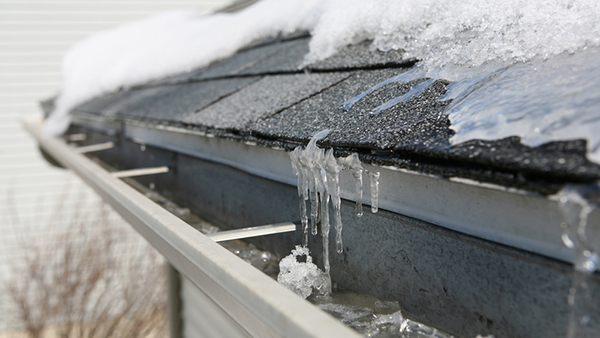With the winter season approaching, property owners and managers should make sure their rentals and properties are ready for some bad weather. Freezing temperatures along with cold rain and snow can create a lot of trouble if you’re not prepared. It’s also a great time to check in with tenants.
Fall is great for some seasonal maintenance before the worst of the weather hits us. If you live in states with freezing temperatures and snow, it’s especially important to prevent the freezing of pipes, faucets, drains, and the creation of ice dams along the edge of the roof. But there are several other things both outside and inside you should be checking, including how well tenants are maintaining their units.
You can get the process going by scheduling a time to inspect the rental and ask tenants about any problems they may be having. It’s a great way to improve communication and to show tenants they are not being ignored. You can also check to see if they are complying with the terms in their lease.
So talk to your tenants and ask them if there’s anything that needs attention. You can follow-up with an in-person inspection, check on any items that tenants have mentioned, and mark items off of your own check list. If you use a property manager, ask them to do this for you.
Inspecting Your Rentals
One thing to keep in mind is liability. If an accident happens, it could put you at the other end of a lawsuit. If there’s an ice storm and you’ve done what you can to ensure a less slippery walkway, you probably won’t have to worry about hiring a lawyer. But if there’s a problem with a gutter, let’s say, and it is dumping water across a sidewalk that freezes and becomes slippery, you may wind up with a legal problem on your hands.
Outside Inspection
The Residential Landlords Association suggests that you or your property manager check the roofs, gutters and eaves for loose shingles or blockages. Leaves and other debris can pile up and create drainage problems. If a downspout is blocked, it can back up and create a small flood, possibly inside the unit. Or it can freeze and cause damage to the downspout.
If there are any hose bibs or water pipes running through an uninsulated part of your rental, you may need to insulate them so they don’t freeze and burst. You also want to check for any dripping pipes or faucets because drips can lead to mold, or they can freeze and cause problems.
RisMedia also suggests that you check stairs, handrails, and other supports to make sure they are not wobbly. Rails should be able to support someone who needs something to grab when slipping on ice or snow.
You should also make sure that the building is not vulnerable to small animals looking for a warm place to hibernate in the winter. Look for any small holes and block them with caulk, hardware cloth, or steel mesh, depending on the size of the opening.
Trees and shrubs should be trimmed to avoid contact with the building. Irrigation systems should be adjusted, and possibly turned off for the winter. AC units may also need to be covered and protected against foul weather. They should be serviced once a year, but if you do fall and spring inspections, it may be better to service AC units in the spring.
Inside Inspection
When checking the interior, make sure smoke and gas alarms are operating. You may want to replace the batteries even if they still have some juice so you know they’ll last until the next inspection. You don’t want your tenants disabling them because they are beeping. Of course, they should be replacing the batteries, but it’s often a good idea to do that yourself.
It’s also a good idea to check the heater, especially if it’s a gas heater. But you may need to hire a professional for that part of the inspection. Heaters may have soot that needs to be cleaned out. If the unit has a fireplace, that may also need attention.
Weatherstripping around windows and doors should be checked. If you increase the heat efficiency of the unit, you will probably also increase the satisfaction of your tenants. If there’s an attic or crawl space under the roof, you may want to look in there, along with any basement or lower crawl space areas.
You can create your own customized check-list depending on what’s needed in your rental units, and then hire someone to do the bulk of the work. If you are a property manager, it’s probably a good idea to have that face-to-face meeting with the tenant at the time of the inspection, as a way to bolster the tenant-landlord relationship.
Remember, this is just a suggested list of things to check and should not be construed as professional advice.
To read or listen to the full podcast from Real Wealth Network, click here.
Enjoyed this article? Sign up for your FREE Think Realty membership to receive access to membership only content, benefits, and stay up to date on our upcoming events.
























0 Comments